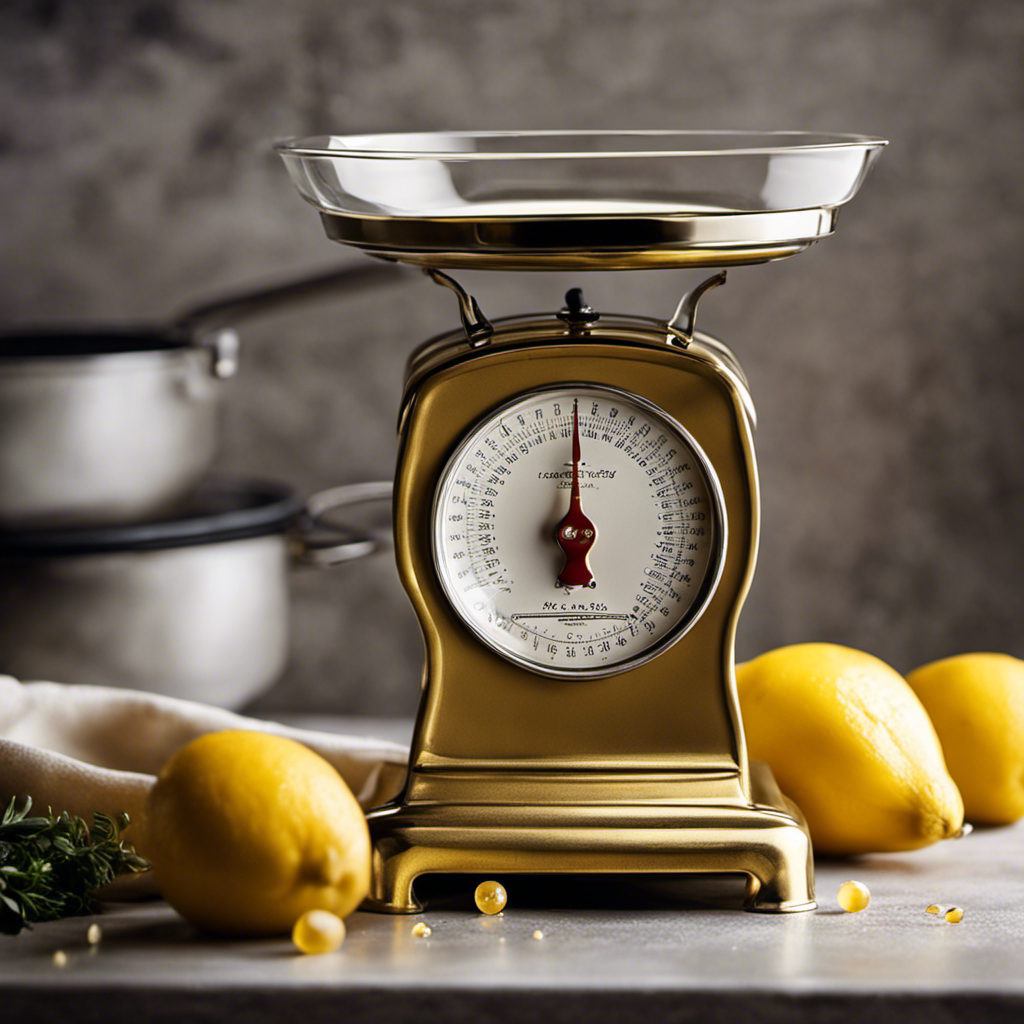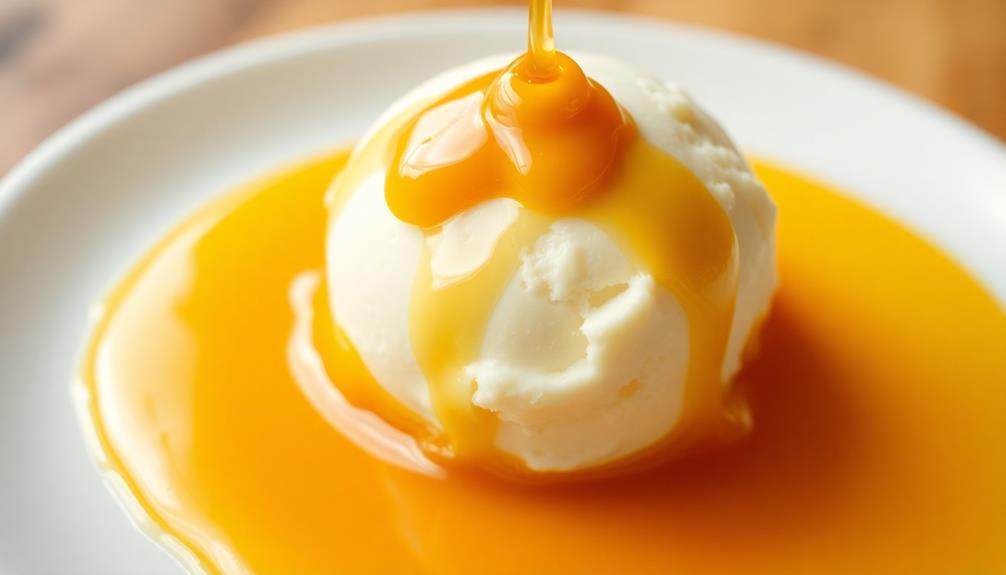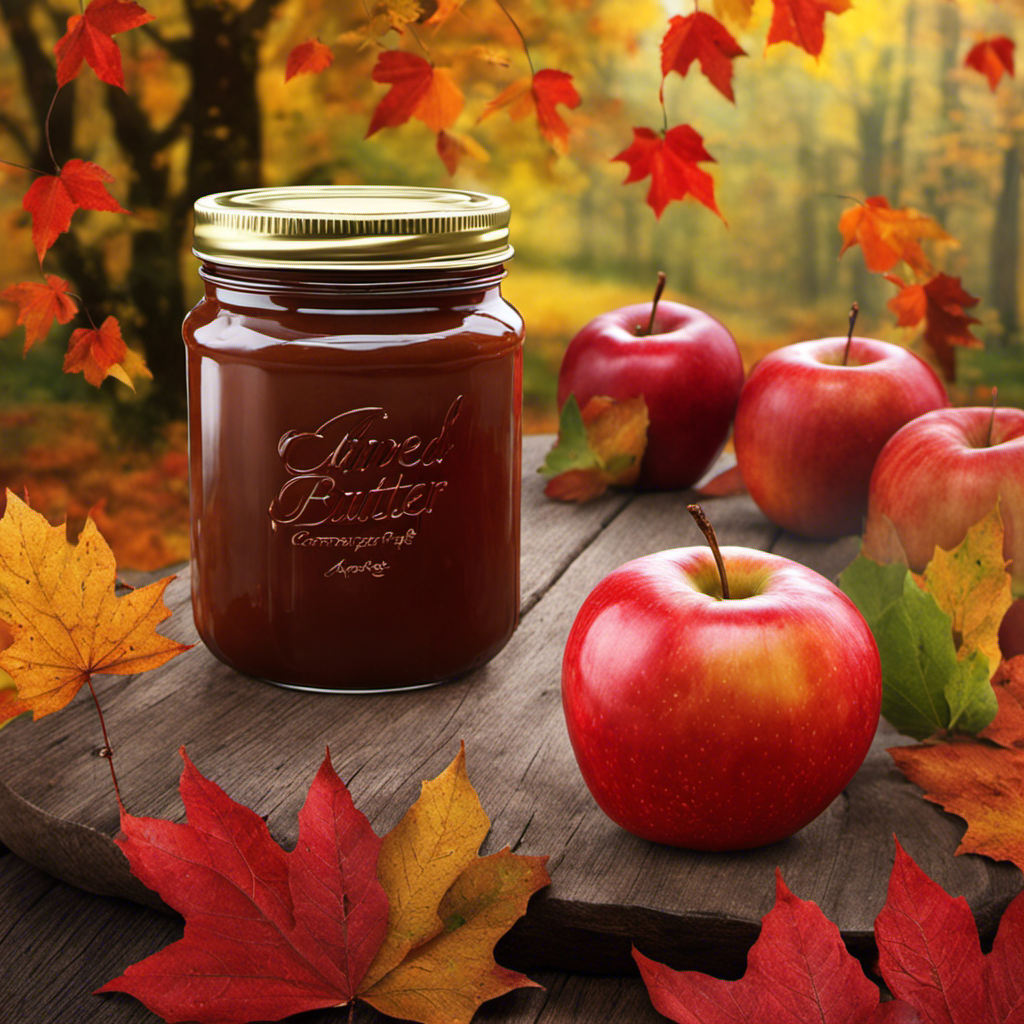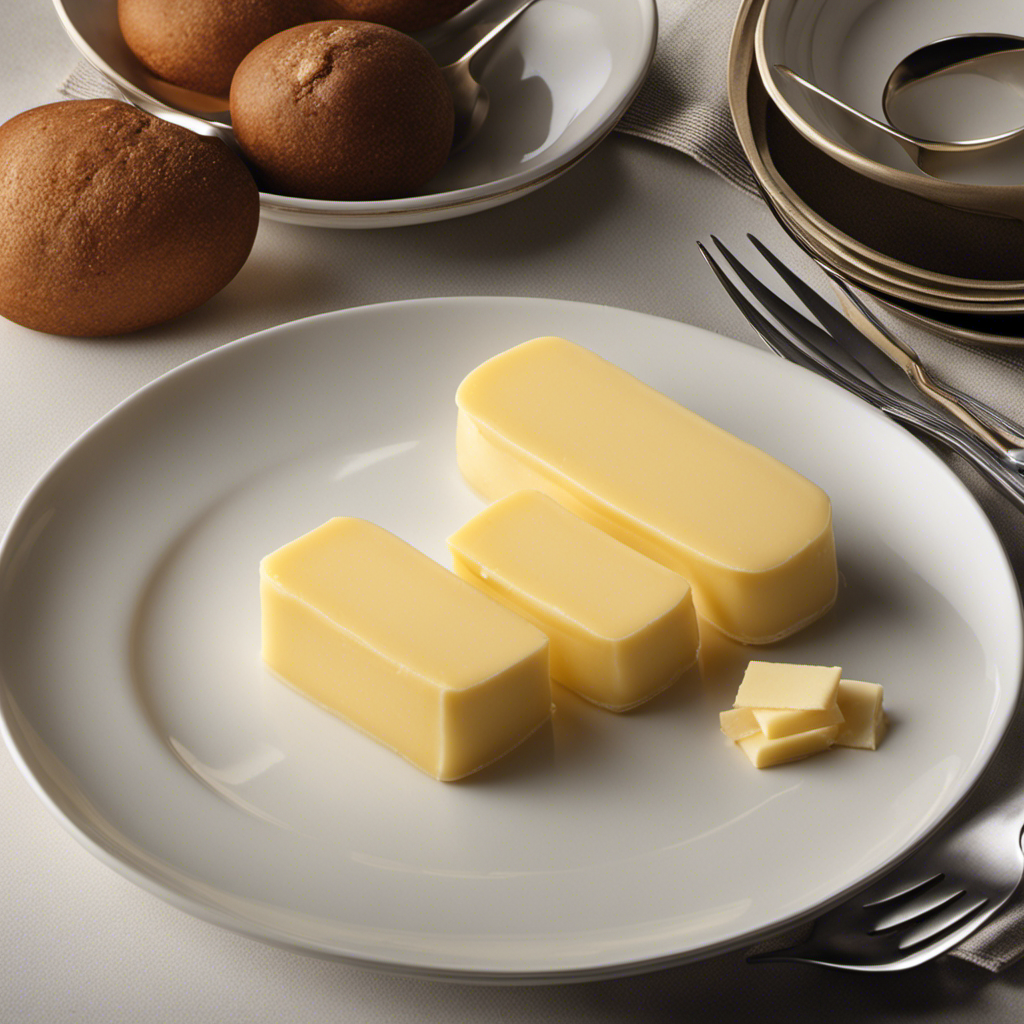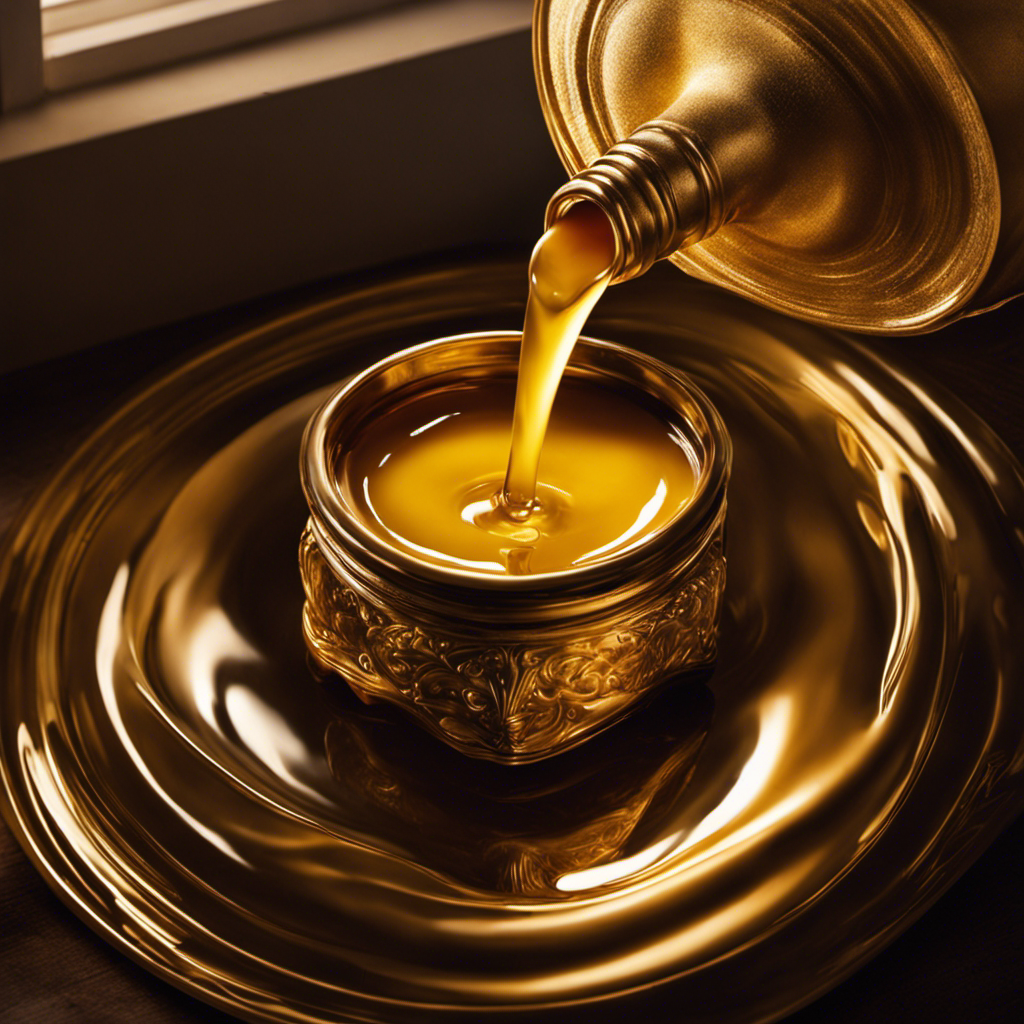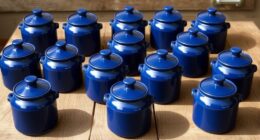As someone who specializes in food science, I frequently consider the significance of ingredient measurements. A common inquiry I encounter is, “What is the weight of half a cup of butter?” While the response might appear simple, it’s crucial to address this question with accuracy.
In this article, I will delve into the scientific principles behind butter’s weight, provide exact measurements in grams and ounces, and offer tips for accurately measuring half a cup of this creamy ingredient.
So, let’s dive in and unravel the mysteries of butter weight together.
Key Takeaways
- Butter density varies based on water content and temperature
- Accurate measurement is best achieved using a kitchen scale
- Accurate measurements are crucial for recipe success
- Understanding butter density and proper measurement techniques ensures consistent results
Understanding Butter Measurements
Do you know how much half a cup of butter weighs?
As a food scientist, I can provide you with precise measurements and techniques for understanding the weight of butter.
Butter density plays a significant role in determining its weight. The density of butter can vary depending on factors such as its water content and temperature.
On average, a half cup of butter weighs approximately 113 grams or 4 ounces. However, it’s important to note that this measurement may differ based on the brand or type of butter used.
To accurately measure butter, it’s best to use a kitchen scale for precise results. Understanding the science behind butter density and employing proper measurement techniques will ensure accurate and consistent results in your culinary endeavors.
Importance of Accurate Butter Measurements
Accurate butter measurements are important to ensure recipe success. As a food scientist, I understand the significance of precise measurements when it comes to ingredient weight.
When discussing the weight of butter, it is essential to provide exact measurements in grams or ounces rather than relying on vague approximations. Factors such as water content, temperature, and density can affect the weight of butter. By understanding these underlying principles, we can ensure accurate measurements in our recipes.
Additionally, it is important to note that different butter varieties, such as salted and unsalted, can have varying weights. To achieve the desired outcome in your recipes, it is crucial to measure butter accurately. By following butter measurement tips and using the correct weight, you can enhance the flavor and texture of your culinary creations.
Now, let’s explore how to convert cups to grams when measuring butter.
Converting Cups to Grams: Butter Edition
When it comes to baking, accurate measurements are crucial, especially when it comes to butter. In this discussion, I will delve into the topic of butter weight conversion, exploring the precise measurements of half a cup of butter in grams or ounces.
Additionally, I will address the accuracy of cup measurements and provide common butter conversions to ensure your recipes turn out perfectly every time.
Butter Weight Conversion
You can easily determine how much half a cup of butter weighs by using a kitchen scale. As a food scientist, I approach ingredient weight from a scientific perspective.
Butter weight can vary depending on factors like water content, temperature, and density. To convert butter volume measurements to weight, it’s important to use precise measurements. In general, one cup of butter weighs approximately 227 grams or 8 ounces. Therefore, half a cup of butter would weigh approximately 113.5 grams or 4 ounces.
It’s crucial to accurately measure butter to ensure recipe success. Remember to use a level measuring cup and pack the butter firmly to remove any air pockets. Additionally, the type of butter used, such as salted or unsalted, can also affect the weight.
Keep these factors in mind when converting butter measurements for your recipes.
Accuracy of Cup Measurements
To ensure precise measurements, it’s important to level your measuring cups when using them for recipes. Understanding cup measurements is crucial for accurate measuring in the kitchen.
As a food scientist, I approach ingredient weight from a scientific perspective. When it comes to measuring butter, factors like water content, temperature, and density can affect its weight. To be precise, it’s best to provide exact measurements in grams or ounces, rather than vague approximations.
When measuring half a cup of butter, it is important to consider the specific weight of butter and its variations based on different factors. By understanding the science of accurate measuring, you can ensure your recipes turn out just right.
Now, let’s move on to common butter conversions.
Common Butter Conversions
Understanding common butter conversions can be helpful when adjusting recipes to suit your needs. As a food scientist, I approach the topic of ingredient weight from a scientific perspective, providing precise measurements and specific details.
Here are some key points to consider when it comes to butter conversions:
- One cup of butter weighs approximately 227 grams or 8 ounces.
- To convert from cups to grams, multiply the number of cups by 227.
- To convert from cups to ounces, multiply the number of cups by 8.
- Different butter varieties, such as salted or unsalted, may have slightly different weights due to variations in water content.
By understanding these conversions, you can accurately measure butter for your recipes.
Now, let’s move on to how to measure half a cup of butter.
How to Measure Half a Cup of Butter
When measuring half a cup of butter, it’s important to know its weight. As a food scientist, I can provide precise measurements and specific details to help you accurately measure your butter.
Instead of relying on vague approximations, let’s dive into the scientific principles and factors that affect the weight of butter. The water content, temperature, and density of butter can vary, which in turn affects its weight.
To accurately measure half a cup of butter, it is helpful to know the weight equivalents. One cup of butter weighs approximately 227 grams or 8 ounces. If you prefer alternatives to using cups for butter measurements, you can use a kitchen scale to weigh your butter directly.
Now that we understand the importance of precise measurements, let’s explore the weight of half a cup of butter in ounces.
The Weight of Half a Cup of Butter in Ounces
When it comes to measuring butter, accuracy is key.
In this discussion, we will explore the conversion of butter weight, precise measuring techniques, and the impact of butter packaging variations.
As a food scientist, I will provide you with precise measurements, scientific explanations, and informative details to ensure you have all the knowledge you need to accurately measure half a cup of butter.
Butter Weight Conversion
To convert half a cup of butter to weight, you can use the conversion factor of 1 cup of butter weighing approximately 227 grams. Here are some tips for accurately measuring butter and understanding butter weight conversion:
-
Use a kitchen scale: To get precise measurements, it’s best to weigh the butter rather than relying on volume measurements.
-
Consider the butter’s water content: Different butter varieties have varying water content, which can affect the weight. Salted butter, for example, usually contains more water than unsalted butter.
-
Temperature matters: Butter can change weight depending on its temperature. It’s recommended to measure butter when it’s at room temperature for accurate results.
-
Remember the conversion factors: If you prefer working with ounces instead of grams, 1 cup of butter is approximately 8 ounces.
Accurate Measuring Techniques
When it comes to accurately measuring butter for cooking, there are a few techniques that can help ensure precision in your recipe. As a food scientist, I understand the importance of precise measurements to achieve consistent results in the kitchen. Here are some tips to help you measure butter accurately:
-
Using a Scale: Weighing butter on a kitchen scale is the most accurate method. One stick of butter, which is equivalent to half a cup, weighs approximately 113 grams or 4 ounces.
-
Measuring Marks on Butter Wrappers: Some butter packages have measurements marked on the wrapper, allowing you to easily cut the desired amount.
-
Water Displacement Method: Fill a measuring cup with water and note the water level. Add butter until the water level rises by the appropriate amount.
Using these techniques will ensure you have the right amount of butter for your recipe, leading to delicious and consistent results.
Butter Packaging Variations
Butter packaging varies in terms of the measurements marked on the wrapper, making it easier to cut the desired amount. Here are some key variations in butter packaging that can affect the weight of half a cup of butter:
-
Different brands may have different weights for their butter sticks. Some may be 4 ounces, while others might be 8 ounces.
-
Some butter packaging may have measurements marked in tablespoons instead of ounces or grams. This can cause confusion when trying to measure half a cup of butter accurately.
-
Butter sold in bulk or tubs may not have any measurements marked on the packaging at all. This makes it harder to determine the weight of half a cup of butter without using a scale.
-
Packaging that includes water or brine can add extra weight to the butter. This can affect the overall weight and measurement accuracy.
These variations in butter packaging highlight the importance of using precise measurements and understanding the specific weight of the butter you are using. To ensure accuracy, it is helpful to refer to a butter weight conversion chart, which will be discussed in the next section.
Butter Weight Conversion Chart
The conversion chart shows how much butter weighs for each cup measurement. To convert butter measurements accurately, it’s important to have precise information.
Half a cup of butter weighs approximately 113 grams or 4 ounces. This weight can vary slightly depending on factors such as the butter’s water content and temperature.
It’s essential to use the correct measurements when baking or cooking to ensure accurate results. When measuring butter, it’s helpful to use a scale for the most precise measurement.
Additionally, it’s worth noting that the weight of butter can differ between salted and unsalted varieties. Salted butter typically weighs slightly more due to the added salt content.
Measuring Butter in Different Forms
Using a scale is helpful for accurately measuring butter in different forms. Here are some key points to understand when measuring butter in recipes:
-
Stick Butter: One stick of butter weighs approximately 113 grams or 4 ounces. This is the most common form of butter used in recipes.
-
Butter Substitutes: When using butter substitutes like margarine or oil, it’s important to check the packaging for weight measurements. They may differ from actual butter weights.
-
Measuring Butter by Volume: If you don’t have a scale, you can measure butter by volume. One cup of butter is equal to 227 grams or 8 ounces.
-
Factors Affecting Butter Weight: The weight of butter can vary depending on factors like temperature, water content, and density. It’s best to measure butter accurately to ensure recipe success.
Understanding these measurements and factors will help you in accurately measuring butter for your recipes. Now, let’s move on to some tips for perfectly measuring half a cup of butter.
Tips for Perfectly Measuring Half a Cup of Butter
When it comes to baking, precise measurements are key to achieving the perfect outcome. In this discussion, I’ll be sharing some butter measuring hacks and tips for accurately portioning half a cup of butter.
As a food scientist, I’ll provide you with the exact measurements in grams or ounces. I’ll also explain the scientific factors that affect the weight of butter and offer informative insights on how different butter varieties can impact the weight.
Get ready to elevate your baking game with these helpful tips!
Butter Measuring Hacks
To accurately measure the weight of half a cup of butter, you can try these butter measuring hacks:
-
Use a kitchen scale: This is the most accurate way to measure the weight of butter. Place a bowl on the scale, tare it to zero, and then add the butter until you reach the desired weight.
-
Use butter measuring tools: Butter comes in sticks or blocks with markings indicating tablespoons or grams. Simply cut the butter according to the desired measurement.
-
Water displacement method: Fill a measuring cup with water and note the water level. Add the butter to the water until the water level rises to your desired measurement. Subtract the initial water level to find the weight of the butter.
-
Use a tablespoon: A standard tablespoon of butter weighs approximately 14 grams. Use this as a rough estimate for half a cup of butter.
These butter measuring hacks ensure precise measurements, making your recipes turn out perfectly every time.
Accurate Butter Portions
Make sure you have precise measurements by trying these handy hacks for accurately portioning your butter. Understanding butter packaging and converting butter measurements is essential for precise baking.
When it comes to measuring butter, it’s important to know that the weight of half a cup can vary depending on factors like temperature and water content. Generally, half a cup of butter weighs 113 grams or 4 ounces. However, it’s always a good idea to check the packaging for specific weight information.
If you don’t have a kitchen scale, you can use a conversion chart to determine the weight of butter in different measurements. Remember, using the correct amount of butter is crucial for achieving the desired texture and flavor in your recipes.
Common Mistakes When Measuring Butter
You might want to avoid these common mistakes when measuring butter:
-
Eyeballing it: Guessing the amount of butter can lead to inaccurate measurements, affecting the texture and taste of your recipe.
-
Using the wrong measuring tool: Using a liquid measuring cup instead of a dry measuring cup can result in extra butter, throwing off the balance of your recipe.
-
Not softening the butter properly: Using cold or melted butter instead of butter at room temperature can affect the volume and structure of your baked goods.
-
Ignoring the water content: Different butter brands have different water contents, which can affect the weight. Always check the label for accurate measurements.
Understanding butter measurements is crucial for recipe success. Accurate butter measurements ensure that your baked goods turn out just right, with the perfect texture and taste. By avoiding these common mistakes and following precise measurements, you can achieve consistent and delicious results in your baking endeavors.
Now, let’s explore how to adjust butter measurements for baking.
Adjusting Butter Measurements for Baking
Adjusting butter measurements for baking can be easily done by using tablespoons as a simple conversion tool. As a food scientist, I understand the importance of precise measurements when it comes to baking.
When it comes to cookies, using the right amount of butter can make all the difference in achieving the perfect texture and flavor. For half a cup of butter, you can use 8 tablespoons as a standard conversion. However, it’s important to note that the weight of butter can vary depending on factors such as its water content, temperature, or density. To ensure accuracy, it’s always recommended to weigh the butter using a kitchen scale.
Additionally, when making pastries, it’s essential to keep the butter cold to achieve flaky results. So, remember to chill the butter before measuring and incorporating it into your dough.
These tips will help you achieve delicious and consistent results in your baking endeavors.
Expert Advice on Weighing Half a Cup of Butter
Using a kitchen scale is the most accurate method for determining the weight of half a cup of butter. Here are some precise details about butter weight that a food scientist or nutritionist would provide:
-
Water content: Butter typically contains about 15-20% water, which can affect its weight. So, if you’re measuring half a cup of butter, it may weigh slightly more due to the water content.
-
Temperature: Butter is often measured at room temperature, as it is easier to work with. However, if the butter is cold or melted, its weight may be different. So, it’s important to consider the temperature when measuring butter accurately.
-
Density: The density of butter can vary slightly depending on its composition and brand. Different butter varieties, such as salted or unsalted, may have slightly different densities, leading to slight variations in weight.
-
Conversion factors: If you’re using a recipe that requires precise measurements, it’s helpful to know the conversion factors for different units of measurement, such as grams or ounces, to ensure accuracy.
Additionally, food scientists and nutritionists may share their favorite butter recipes and provide tips on how to soften butter quickly for baking purposes.
Frequently Asked Questions
Can I Use Margarine Instead of Butter When Measuring Half a Cup?
You can use margarine instead of butter when measuring half a cup. However, it is important to note that the weight of margarine may differ slightly from butter due to variations in water content and density.
Is It Necessary to Use Unsalted Butter for Accurate Measurements?
Using salted butter vs unsalted butter for baking is a personal preference, but it’s important to use accurate measurements. Half a cup of butter typically weighs about 113 grams or 4 ounces.
Can I Measure Half a Cup of Butter Using a Kitchen Scale?
Using a kitchen scale for accuracy, half a cup of butter can be measured easily. Converting butter measurements to grams or ounces ensures precise results. It’s a scientific and informative way to ensure accurate baking.
How Can I Accurately Measure Half a Cup of Butter Without a Measuring Cup?
To measure half a cup of butter accurately without a measuring cup, you can use alternative methods. One option is to weigh the butter using a kitchen scale, ensuring precise measurements for your recipe.
Are There Any Alternative Methods for Measuring Half a Cup of Butter Accurately?
There are alternative methods for measuring half a cup of butter accurately, such as using a kitchen scale or measuring it by weight. These methods ensure precise measurements and avoid relying on vague approximations.
Conclusion
In conclusion, accurately measuring half a cup of butter is crucial for achieving the perfect balance of flavors and textures in your recipes.
While some may think this is a simple task, it requires precision and attention to detail.
By understanding the weight of half a cup of butter, whether it’s in grams or ounces, you can ensure consistent results in your baking endeavors.
So, next time you’re in the kitchen, don’t underestimate the importance of accurate butter measurements – your taste buds will thank you!
